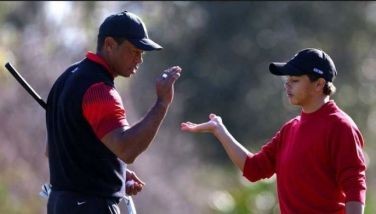Do we endanger our kids?
August 9, 2004 | 12:00am
The first is Fred Engh, the author of Why Johnny Hates Sports. Engh, a 68-year old grandfather of over a dozen youngsters, chronicled his growing disenchantment with how parents were treating their children within a team sports environment. He saw fathers force their sons to play with injury, and daughters whose coaches were encouraging them to shoplift on his behalf, and so on.
"The one thing people need to understand is that they don’t need to put up with this anymore," Engh is quoted as saying.
In 1980, Engh decided to do something to stop this "legalized child abuse." He put up a small office in West Palm Beach, Florida, and created a training manual for coaches. Until then, nobody had really thought to outline the differences between coaching little kids and coaching varsity athletes and adults. His aims were to make team sports less pressurized, safer and more child-friendly. Kids were not little adults, after all.
Today, Engh’s National Alliance for Youth Sports has certified 2.1 million volunteer coaches across the United States. Training now includes parents, showing them videos on how to be a good sports parent, and commit them to a sportsmanship pledge for the sake of their children. Lately, the National Alliance has even initiated teaching the basic skills to toddlers as young as three years old, so that their initial exposure to sports would not be discouraging or traumatic.
The next pillar of positivism in youth sports is Jim Thompson. Thompson, a former college basketball player himself, was coaching his son’s baseball and basketball teams while he was at Stanford Business School. He didn’t enjoy all the negative interplay between coaches and players, so he recalled his studies on positive reinforcement, remembering the impact it had on disturbed children. He wrote a book called Positive Coaching, which led to his organizing the Positive Coaching Alliance (PCA).
One of the believers in Thompson’s philosophies is former Los Angeles Lakers and Chicago Bulls coach Phil Jackson. Jackson was having a tough time with forward Horace Grant while he was in his run with the Bulls. Jackson had been riding Grant pretty hard, and their relationship had basically crumbled. With the positive approach, Jackson had turned things around. He became the PCA’s national spokesman.
In many youth sport programs in the United States, a PCA workshop is mandatory to participation. The PCA has run workshops for over 400 youth sports organizations, training an estimated 60,000 coaches and parents. What appeals to many coaches is the PCA’s belief in striving to win while using sports to teach life lessons. Common themes are "honoring the game," shrugging off mistakes as a part of life and mastering skills. The emphasis is improving the self, without beating yourself up for not getting things right all the time.
Cal Ripken Jr., Major League Baseball’s iron man and a father of two himself, was livid at how coaches used loopholes in the game of baseball to get a win. He cited coaches who discouraged their players from swinging, since younger pitchers tend to throw more balls than strikes.
"You create an environment that is frustrating to the defensive team, especially the pitcher," he told US News and World Report. "He starts crying. He’s thinking ‘How terrible that all these kids are crossing the plate on passed balls and wild pitches and they are stealing on me. It’s not fair.’ And they break the kids down emotionally. And that’s how they win."
Ripken confirmed what studies started to show. The national PTA Convention in Charlotte found that 44 percent of parents confessed that their child had dropped out of a sport that made him or her unhappy. Ironically, 92 percent of the respondents said that sports were either important or very important to them. Half shared the complaint that youth sports were too competitive or coaches were too focused on winning.
Pediatric sports specialists are also alarmed over the increasing occurrence of overuse injuries like stress fractures and tendinitis. Youngsters today are tired, period.
And if you think the problem is only overseas, think again. The signs are starting to surface for the young and very young here in the Philippines. Badminton-playing twins Rachel and Raquel Guerrero are complaining of burnout from all the tournaments and appearances they are doing. The sudden jump in ACL injuries in the UAAP and NCAA basketball tournament is impacting the parity of both leagues, and other cumulative effects of playing too much for too long are emerging in the form of declining performance.
The main question is: are sports still fun for young people? When did it stop being fun? And what are we going to do about it?
BrandSpace Articles
<
>
- Latest
- Trending
Trending
Latest
Trending
Latest
Recommended
































